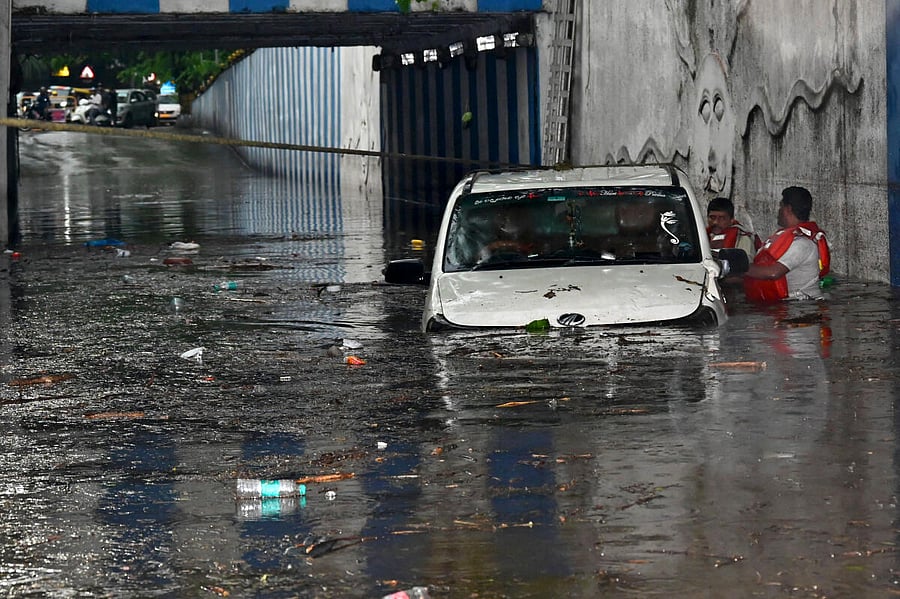
Motorists using underpasses in Bengaluru are worried in the wake of the tragic death of a techie by drowning on Sunday.
Experts attribute the flooding to a number of factors, the most important being poor upkeep.
“Once the underpasses are built, there needs to be a robust maintenance model,” says Naresh Narasimhan, architect and urban designer.
All underpasses are required to follow the guidelines laid down by Indian Road Congress, informs Ashish Verma, associate professor of the department of civil engineering (transportation systems), Indian Institute of Sciences (IISc), but in reality they don’t. “The drainage plan, gradient and turning radius are all prescribed. Unfortunately the guidelines are mostly not followed,” he says.
The norm is that underpasses should be wide enough to accommodate one lane in each direction, but often that is not the case, he observes.
In addition, underpasses should have automatic pumps, adds Narasimhan. “A lot of the time, these underpasses are lower than the storm water disposal system. At the bottom of an underpass, there is usually a collector drain, but there must also be pumps that are automatically triggered when the water level goes above the drain and pushes the water into the storm water drain. Without these measures, the flooding will happen again and again,” he explains. But, the pump solution won’t work if the maintenance is poor, he warns.
Architect and author Yashaswini Sharma suggests immediate intervention to fix the city’s broken stormwater drain networks. “The civic and traffic officials should put up warning signs at such locations and send alerts on the mobile when the flooding gets dangerous,” she says.
Risky proposition
Underpasses are risky not just in Bengaluru but across the country, says Verma. “This is largely a result of poor workmanship and flawed execution. Our civic bodies fail to maintain the infrastructure in the long run,” he says.
He calls for “disaster resilient” infrastructure. “This is something that is not understood by our civic agencies. Sunday’s weather conditions were not extreme, but they still impacted the city. This is why it is important to improve resilience and take precautionary interventions. This is what we should be focusing on rather than building flyovers and underpasses,” he tells Metrolife.
Two danger spots
As soon as it rains, the traffic police usually shut down the underpasses at KR Circle and near the Bangalore Golf Club, says MA Saleem, special commissioner (traffic), Bengaluru.
“These are notorious for flooding, and we always divert traffic away from them when it rains. The officer on duty puts up barricades to indicate the roads are closed,” he says.
However, on Sunday, the flooding had pushed the barricades away. “To deal with such instances, we are now making it mandatory to equip all our jeeps with ropes and rescue material. This way, the police don’t have to wait for the rescue (fire and emergency services) team to arrive,” he adds.
He advises Bengalureans to strictly avoid underpasses when it rains and always check the social media handles of the traffic department (@blrcitytraffic) for information on areas to be avoided.
What happened
On Sunday, when the city witnessed a downpour, Infosys employee Batula Bhanurekha drowned when the car she was travelling in stopped in the middle of the flooded KR Circle underpass. Five members of her family were rescued from the car.
A BBMP report says the flooding was caused by large amounts of leaves and branches blocking the iron gates of the drain. The underpass has a 0.6 metre-wide pipeline connected to the rajakaluve that passes through the premises of the Public Works Department and is intact, DH reported on Tuesday.
BBMP plans to audit all underpasses in the next few days and come up with measures to prevent flooding. They plan to create a new drainage system arounf the KR Circle underpass.
